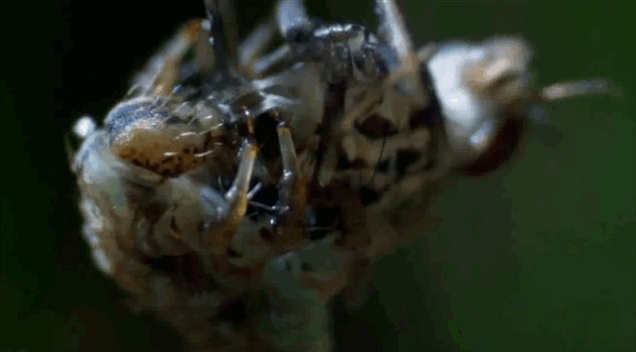Caterpillars can look scary, particularly up close, but since most eat leaves, flowers and your favorite shirt, carnivorous species sound like something out of a horror film. However, the creatures in the gifs below are absolutely real.
Fortunately for those thinking they never want to venture into the garden again, these creatures are restricted to the Hawaiian islands (well fortunately if you don't live in Hawaii).
The gifs were created by Robbie Gonzalez at io9 from footage released in a BBC documentary. As usual, his write up is fantastic and you should go read it.
The evolution of this behavior is a puzzle. These are not herbivores that do some occasional scavenging on the side for extra nutrients, like giraffes. Insects make up their entire diet; when they chew on leaves, they don't even swallow what they've bitten off. Instead, the caterpillars use the hole they make to anchor themselves for attacks like the ones in the gif.
The caterpillars display aspects of convergent evolution. They exhibit features associated with spiders, such as spinning webs to capture snails. Nevertheless, since Hawaii is well supplied with arachnids, it is not known why caterpillars adopted a similar ecological niche there and nowhere else, although the absence of some other predators such as praying mantises probably contributed.
Snail catcher's aside, the caterpillars are from the genus Eupithecia, common around the world but vegetarian elsewhere. A small number of Hawaii's Eupithecia feed on flowers, but since the meat-eating behavior was discovered in the 1980s almost 20 species across all Hawaii's islands have been found to engage in it.
The adult stage of the caterpillar's evolution is far less dramatic, with the larvae turning into moths that look and act like moths anywhere else.
Many of the voracious locals are threatened by habitat loss and the arrival of invasive species. So far there are no reports of any of them turning the tables and taking up residence in continental rainforests, where the native insects presumably would not know what has hit them.
We've left the most grusome one until last so you can look away if you don't want to see. National Geographic offers a different view of some of the same, and similar, footage.









